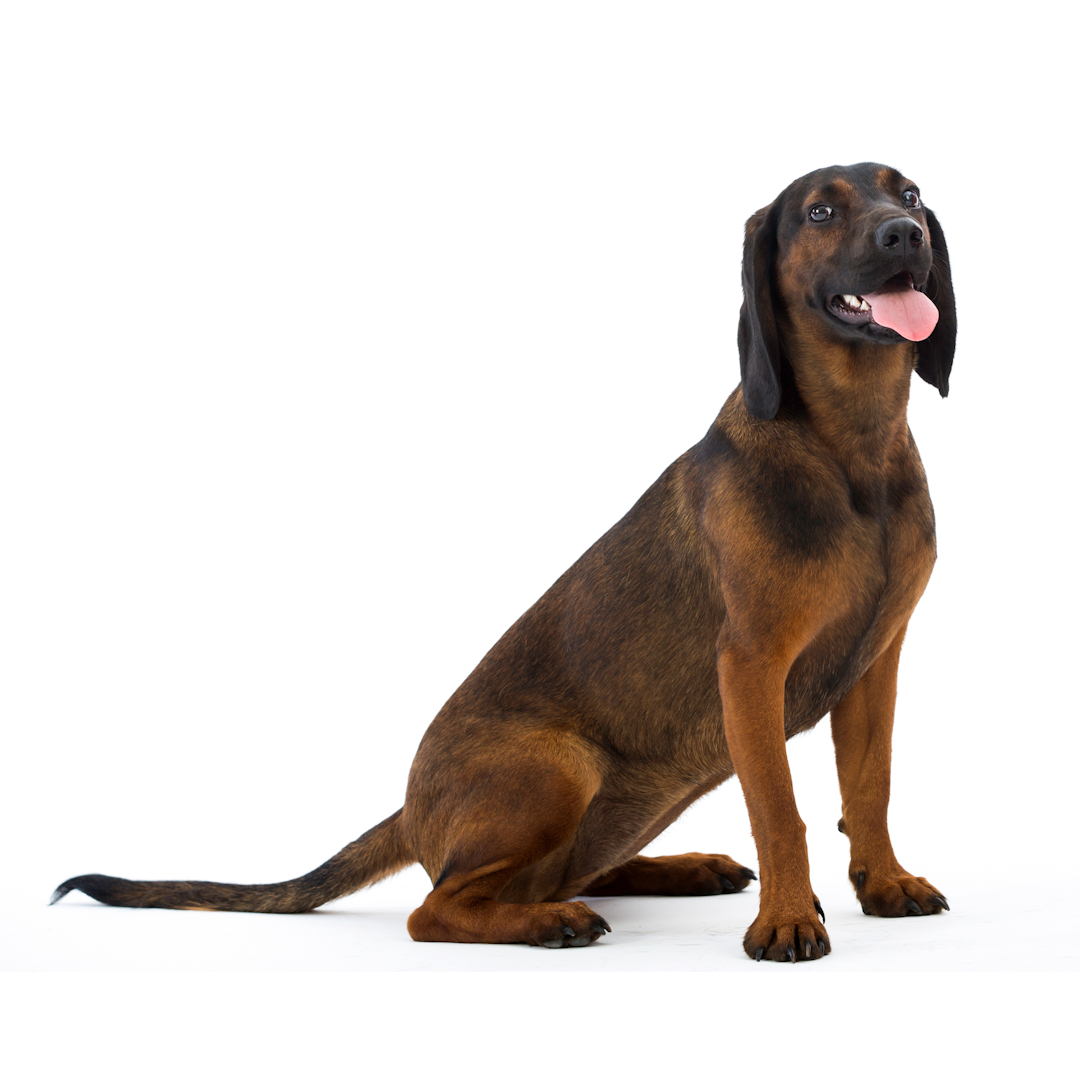
Alpine Dachsbracke
The Alpine Dachsbracke is a small breed of dog of the scent hound type originating in Austria. These dogs were bred to track wounded deer and other game, with their history going back to the 19th century. Alpine Dachsbrackes are known for their robust build, making them excellent working dogs in steep, rocky terrain.
- Origin
- Austria
- Alternate Names
- Alpenländische Dachsbracke (German)
- Life Expectancy
- 12-14 years
- Average Male Height
- 13-16 inches
- Average Female Height
- 13-16 inches
- Average Male Weight
- 33-40 pounds
- Average Female Weight
- 33-40 pounds
- Coat Length
- Short
- Coat Type
- Double
- Coat Colors
- Dark Deer Red, Black
- Coat Pattern
- Red-brown Markings on head (called Vieraeugl), chest, legs, feet, and underside of the tail, White star Markings on chest
Genetic Predispositions and Health
Alpine Dachsbracke can suffer from neuronal ceroid lipofuscinosis 8 (NCL 8). They may be prone to back issues that can affect Dachshunds, and may also suffer from spinocerebellar ataxia. Genetic testing is recommended, including for the following specific conditions: progressive rod-cone degeneration, chondrodystrophy (CDDY and IVDD), chondrodysplasia (CDPA), hyperuricosuria, and degenerative myelopathy.
Personality and Behavior
The Alpine Dachsbracke is known to be courageous, friendly, and intelligent. This breed is also typically loyal and dedicated to its family. Being a scent hound, these dogs are known for their keen sense of smell and determination when on a trail. They have a strong prey drive and would do best with families that do not have other small animals.
The Alpine Dachsbracke tends to be good with children and gets along well with other dogs, although early socialization is always beneficial. These dogs are active and need regular exercise to keep them healthy and prevent boredom. They can also be stubborn at times, requiring consistent training methods. While they can adapt to living in an apartment, they would do best with access to a yard where they can follow their noses and explore.
Fun Facts
The Alpine Dachsbracke was recognized by the United Kennel Club on January 1, 1996.
References
https://www.royalcanin.com/us/dogs/breeds/breed-library/alpine-dachsbracke
https://petkeen.com/alpine-dachsbracke/
https://vgl.ucdavis.edu/breed/alpine-dachsbracke
https://www.mdpi.com/2073-4425/10/5/362
https://onlinelibrary.wiley.com/doi/pdf/10.1002/9781119540687#page=856